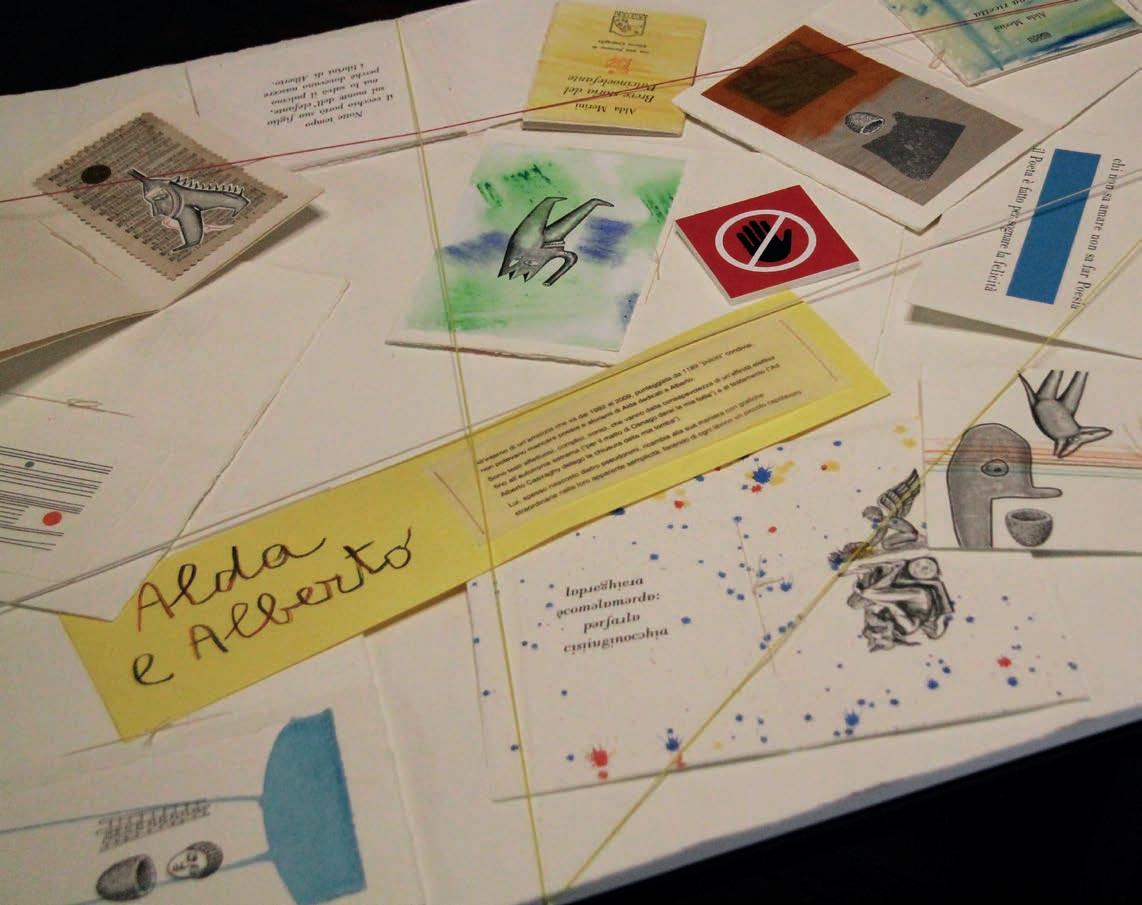
13 minute read
Merini e Casiraghy, geniali aforismi raccontano un raro sodalizio culturale Merini and Casiraghy, brilliant aphorisms tell a rare cultural friendship
Merini e Casiraghy, geniali aforismi raccontano un raro sodalizio culturale
Merini and Casiraghy, brilliant aphorisms tell a rare cultural friendship
Advertisement
Andrea Tomasetig
Spesso sugli scrittori e gli uomini di cultura quando non ci sono più si stende l’oblio. Pochi sfuggono a questo destino. La poetessa Alda Merini è una di questi, rimasta viva nel ricordo e oggetto di crescente interesse nelle vecchie e nuove generazioni. Giornali, radio, televisioni, università e biblioteche di tutta Italia nei mesi scorsi l’hanno ricordata nel decimo anniversario della scomparsa, avvenuta il 1 novembre 2009.
E Milano, la città dove è vissuta, è stata giustamente in prima fila. Una mostra ha anticipato le celebrazioni e ha fatto strada alla pubblica acquisizione, da parte del Comune di Milano, dell’intero archivio delle edizioni Pulcinoelefante “Alda Merini e Alberto Casiraghy, Storia di un’amicizia”. Mostra allestita nel palazzo déco costruito dall’architetto Piero Portaluppi e ora Casa Museo Boschi Di Stefano, sede al secondo piano di una delle più importanti collezioni di arte italiana del Novecento, aperta a tutti anche grazie ai volontari del TCI. La mostra, promossa da Casa Boschi insieme al Comune di Milano e da me curata, ha messo in luce un aspetto importante dell’opera della Merini, finora rimasto in ombra per la difficoltà di reperire i materiali originali e di presentarli in modo selezionato e organico: sono i 1189 librini creati insieme ad Alberto Casiraghy. Un nome, quello del tipografo-poeta-artista-editore brianzolo, che i lettori di Mondo De Cecco hanno avuto modo di conoscere nelle pagine del numero 9 della rivista.
Dal gennaio 1992, anno in cui è nato il loro sodalizio propiziato da Vanni Scheiwiller, fino al 2009 tutti o quasi i giorni Alda telefonava più volte ad Alberto e gli dettava brevi poesie e aforismi, tutt’altro che minori e marginali, un universo di parole tra spiritualità e carnalità, dolore sublimato, ironia e poesia. Oblivion often spreads over writers and men of culture when they are no longer there. Just few of them escape this fate. The poetess Alda Merini is one of them, she has remained alive in the memory and she is the object of growing interest in the old and new generations. Newspapers, radios, televisions, universities and libraries from all over Italy have recalled her in recent mounths on the 10th anniversary of her death, occurred on the 1st November 2009.
And Milan, the city where she lived, was rightly in the front row. An exhibition anticipated the celebrations and made way for the public acquisition, by the Municipality of Milan, of the entire archive of the Pulcinoelefante editions “Alda Merini and Alberto Casiraghy, the story of a friendship”. Exhibition set up in the déco palace built by the architect Piero Portaluppi and now “Casa Museo Boschi Di Stefano”, that is the location, on the second floor, of one of the most important collections of Italian art of the twentieth century, open to everybody also thanks to TCI volunteers. The exhibition, promoted by Casa Boschi together with the Municipality of Milan and curated by me, highlighted an important aspect of Merini’s work, which had so far remained in the shade due to the difficulty of finding the original materials and of presenting them in a selected and organic way: these are the 1189 booklets created together with Alberto Casiraghy. A name, the one of the typographer-poet-artist-publisher from Brianza, which the readers of Mondo De Cecco could discover in the pages of issue 9 of the magazine.
Since January 1992, the year in which their friendship, propitiated by Vanni Scheiwiller, was born, until 2009 all almost the days Alda called Alberto several
RAFFINATO ALLESTIMENTO E RECORD DI AFFLUENZA
LA CREATIVITÀ DI CRISTIANA VANNINI HA CONTRIBUITO ALL’EXPLOIT DELL’EVENTO I 5.338 VISITATORI DELLA MOSTRA MERINI-CASIRAGHY RAPPRESENTANO IL NUOVO RECORD DI PRESENZE PER CASA BOSCHI DI STEFANO
REFINED SET UP AND RECORD IN AFFLUENCE
THE CREATIVITY OF CRISTIANA VANNINI CONTRIBUTED TO THE ACCOMPLISHMENT OF THE EVENT. THE 5338 VISITORS FOR THE MERINI-CASIRAGHY EXHIBITION REPRESENT THE NEW RECORD OF ATTENDANCE FOR CASA BOSCHI DI STEFANO
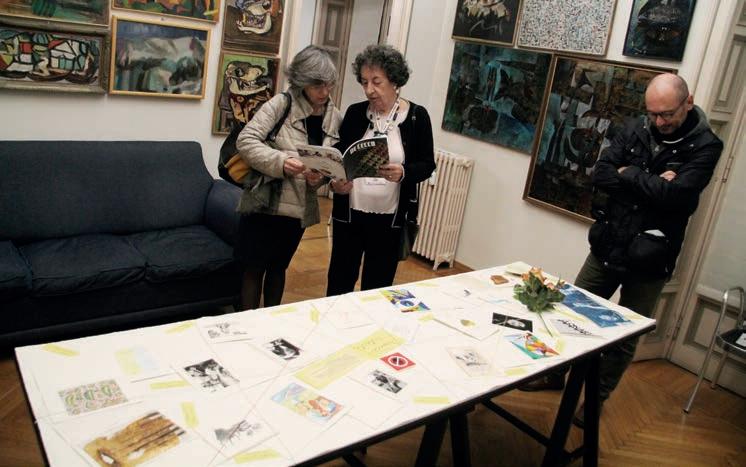
La pasta delle lettere: Salis e Casiraghy The pasta of letters: Salis and Casiraghy
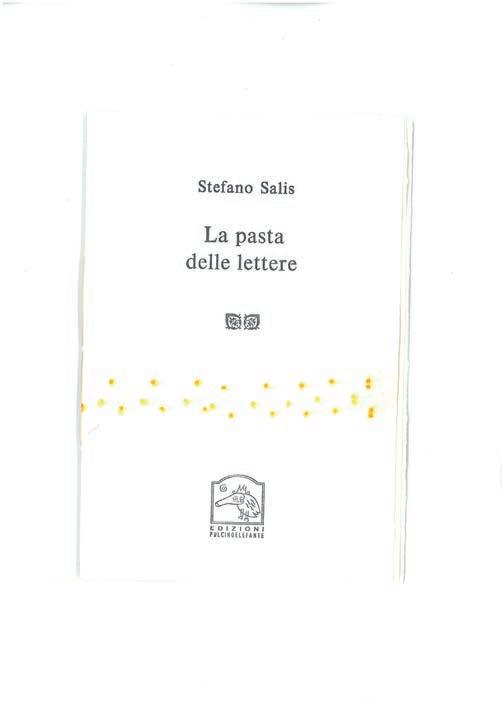
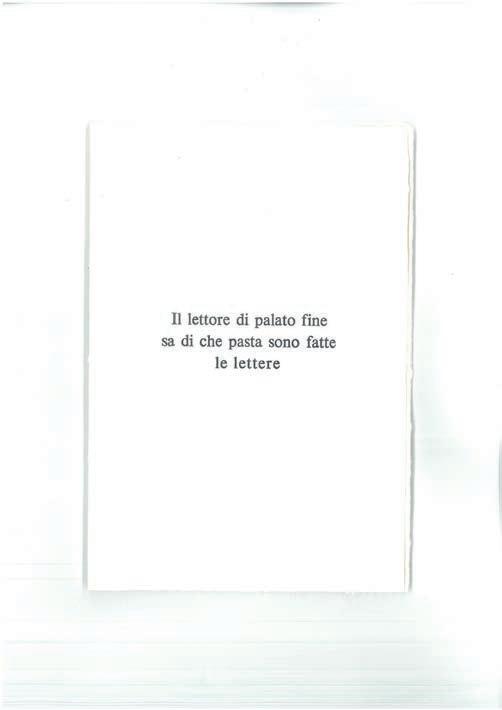
Alcune trascrizioni poi diventavano uno o due “pulcini” (termine affettuoso con cui vengono chiamati i librini delle edizioni Pulcinoelefante, otto pagine in tutto, composte e rilegate a mano, con una grafica o un’opera d’arte originale, in una tiratura al massimo di 33 copie), recapitati da lui a mano il sabato mattina nell’appartamento della poetessa, in zona Navigli.
Così per diciotto lunghi anni. I cento “pulcini” esposti, insieme a qualche documento e cimelio, raccontano quella amicizia umana e intellettuale attraverso un percorso diviso in sei sezioni e distribuito in sei sale. I volumetti, distesi su tavoli in apparente studiata casualità e “imprigionati” da sottili elastici – nel raffinato allestimento di Cristiana Vannini – emanano la forza dei loro versi intensi, dei folgoranti aforismi e dei contrappunti grafici di Alberto Casiratimes and dictated to him short poems and aphorisms, far from being minor and marginal, a universe of words between spirituality and carnality, sublimated pain, irony and poetry. Some transcriptions then became one or two “pulcini” (chicks) (tender name with which the little books of the Pulcinoelefante editions are called, a total of eight pages, composed and bound by hand, with a graphic or an original piece of art, in a circulation of at most 33 copies), that he delivered by hand on Saturday mornings to the poetess’ apartment, in Navigli area. This happened for 18 long years. The one hundred “pulcini” exhibited, together with some documents and mementos, tell that human and intellectual friendship through a path divided into six sections and distributed in six rooms. The little books, lying on the tables in ostensible researched randomness and “imprisoned” by thin
ispirati dall’Alfabeto De Cecco inspired by the De Cecco alphabet


ghy, tra surrealismo e magiche astrazioni, e degli altri artisti coinvolti. E dialogano con i quadri e le sculture intorno di De Chirico, Savinio, Sironi, Morandi, Fontana… Non sorprende a questo punto il successo mediatico e di pubblico – fin dall’affollatissima inaugurazione il 1 ottobre scorso, conclusa da un reading ideato e messo in scena dalla scrittrice e attrice Patrizia Zappa Mulas nel vicino teatro Elfo Puccini, e proseguito con le numerose iniziative collaterali comprendenti presentazioni di libri, spettacoli in tema, visite guidate – , che ha portato alla proroga fino al 10 novembre della mostra, vista da oltre 5.000 visitatori e recensita da più di 150 articoli giornalistici. Tutto questo è stato reso possibile dal mecenatismo della De Cecco, che ha sostenuto la complessa e articolata macchina espositiva. Ma il sostegno all’iniziativa nella città dell’Expo 2015 si inserisce in un contesto rubber bands, in the refined Cristiana Vannini’s setting up, emanate the strength of their intense verses, of the stunning aphorisms and of the graphic counterpoints of Andrea Casiraghy, between surrealism and magical abstractions, and of the other artists involved. And they talk together with the paintings and the sculptures all around of De Chirico, Savinio, Sironi, Morandi, Fontana… at this point the media and public success is not surprising - since the very crowded inauguration, on last 1st October, concluded by a reading conceived and staged by the writer and actress Patrizia Zappa Mulas in the near Elfo Puccini Theatre, and continued with the numerous accessory initiatives, including book presentations, themed shows, guided tours -, that led to the extension until the 10th November of the exhibition, seen by more than 5000 visitors and reviewed by more than 150
MILANO HA OSPITATO NELLA STORICA CASA BOSCHI DI STEFANO UNA SELEZIONE DEI LIBRINI PULCINOELEFANTE CREATI DALLA POETESSA E DALLO STAMPATORE ARTISTA LA PREZIOSA COLLEZIONE ACQUISITA DAL COMUNE LOMBARDO MILAN HOSTED IN THE HISTORICAL CASA BOSCHI DI STEFANO A SELECTION OF PULCINOELEFANTE LITTLE BOOKS CREATED BY THE POETESS AND THE PRINTER ARTIST THE PRECIOUS COLLECTION ACQUIRED FROM THE MUNICIPALITY LOMBARDO
che parte da più lontano, da quel librino Pulcinoelefante del 2010 di Arturo Schwarz intitolato Ricetta per spaghetti da leccarsi i baffi, dove si indicavano rigorosamente gli spaghetti De Cecco n° 12, e la cui storia è raccontata nei particolari in un ampio articolo di Giuseppe Cauti del numero 9 di Mondo De Cecco.
E si arriva al sorprendente secondo librino, La pasta delle lettere, in comune con Alberto Casiraghy, fresco di stampa e frutto di un brillante aforisma del giornalista e bibliofilo Stefano Salis giocato sul rapporto tra lettere e pastina Alfabeto De Cecco n° 173, pastina che è parte integrante dell’originale edizione d’artista stampata in sole 30 copie, come si può vedere nelle riproduzioni.
Il volumetto è stato presentato il 16 ottobre (in coincidenza con la Giornata Mondiale dell’Alimentazione) in una tavola rotonda a Casa Boschi non a caso intitolata “La pasta delle lettere. Casiraghy e De Cecco, cibo e cultura”. All’incontro, moderato da Stefano Salis del “Sole 24Ore”, hanno partecipato Maria Fratelli, direttrice di Casa Museo Boschi Di Stefano, Alberto Casiraghy, il curatore e Marco Camplone, direttore Relazioni esterne e Affari istituzionali De Cecco, nonché direttore responsabile della rivista Mondo De Cecco . A lui nelle conclusioni il compito di illustrare il rapporto cibo-cultura interpretato da De Cecco, all’interno di una grande tradizione italiana di comunicazione e cultura d’impresa, a partire dall’editoria aziendale. S newspaper articles. All this has been made possible thanks to the patronage of De Cecco, that supported the complex and well-structured exhibition machine.
But the support to the initiative in the city of Expo 2015 is included in a context that starts from farther away, from that Pulcinoelefante little book written by Arturo Schwarz on 2010, entitled Recipe for mouthwatering spaghetti where De Cecco spaghetti number 12 where precisely indicated, and whose story is told in detail in an extensive article by Giuseppe Cauti of Mondo De Cecco number 9. And we come to the surprising second book, The pasta of letters, in common with Andrea Casiraghy, hot off the press and the result of a brilliant aphorism by the journalist and bibliophile Stefano Salis, played on the relationship between letters and the De Cecco alphabet pasta number 173, a pasta that is an integral part of the original artist edition printed in just 30 copies, as it is possible to see in the reproductions. The little book was presented on 16th October (coinciding with the World Food Day) in a round table in Casa Boschi, not by chance entitled The pasta of letters. Casiraghy and De Cecco, food and culture. The meeting, moderated by Stefano Salis of The Sole 24Ore newspaper, was attended by Maria Fratelli, director of the Casa Museo Boschi Di Stefano, Andrea Casiraghy, the curator and Marco Camplone, director of public relations and institutional affairs at De Cecco, as well as editor in chief of the Mondo De Cecco magazine. He had the task, in the conclusions, of illustrating the relationship between food and culture interpreted by De Cecco, within a great Italian tradition of communication and corporate culture, starting from corporate publishing. S
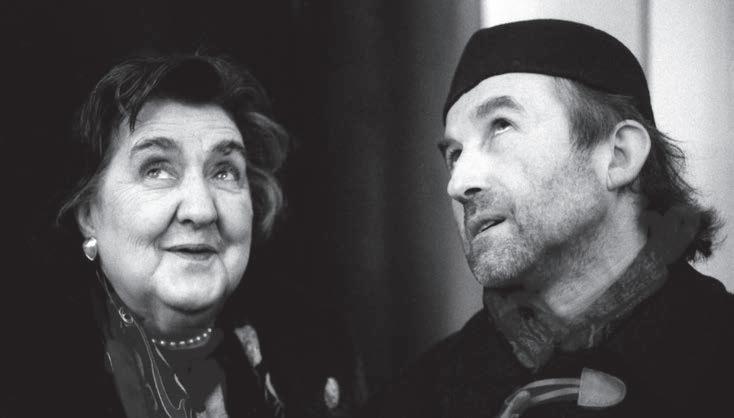
CHI È ALDA MERINI
Alda Merini, nata a Milano nel 1931, si fa conoscere giovanissima come una delle voci più originali della nuova poesia italiana. Fin dal 1947 frequenta, tra gli altri, Giacinto Spagnoletti, Maria Corti, Salvatore Quasimodo, Giorgio Manganelli, con cui ha un’intensa relazione. Nel 1954 sposa il panettiere Ettore Carniti, da cui ha quattro figlie, ma presto deve fare i conti con “le ombre della mente” ed è oggi nota al grande pubblico soprattutto per versi, prose e ricordi legati alla sua intermittente e dolorosa esperienza manicomiale (1962-1978), da cui riemerge con la chiusura dei manicomi a seguito della legge Basaglia. Ritornata nella sua casa milanese in zona Navigli riprende intensa, tra mille difficoltà esistenziali (fino al vitalizio della legge Bacchelli concesso nel 1995) e un breve soggiorno a Taranto sposata con l’anziano poeta Michele Pierri, la sua produzione poetica. Con gli anni Novanta arrivano il crescente successo editoriale e la notorietà mediatica. Va sottolineato che la grande poetessa – scomparsa nel 2009 – non può essere ricordata solo per il suo viaggio nel dolore, da cui è riemersa con cicatrici ma vittoriosa: i suoi versi visionari cantano con forza tutte le facce della vita.
CHI È ALBERTO CASIRAGHY
Alberto Casiraghy (1952) ha conosciuto un numero sorprendente di poeti e scrittori, artisti di tutte le arti, uomini e donne di ogni condizione. I suoi Pulcinielefante lo hanno accompagnato in molte città d’Italia e del mondo. La sua mente è sempre in viaggio e si rapporta ai ritmi profondi della natura: il vento, i fiumi, la notte, i fili d’erba e i boschi, l’infinita varietà degli animali, il respiro di una donna, il silenzio. Sogna rinoceronti, balene non arpionate, aragoste (vive), lumache e maiali in libertà, mentre il gattone Igor gli fa compagnia nella magica casa-officina di Osnago, in Brianza, dove – dal 1982, dopo un’esperienza come tipografo e scenografo – sempre a mano compone, stampa e cuce le sue edizioni in poche copie, giunte a 10.500 titoli. Gli aforismi, come i disegni e le alchimie d’arte che crea, sondano i misteri e le profondità dell’animo umano, il proprio e quello degli altri.
WHO IS ALDA MERINI
Alda Merini, born in Milan in 1931, became known very young as one of the most original voices of the new Italian poetry. Since 1947 she saw, among others, Giacinto Spagnoletti, Maria Corti, Salvatore Quasimodo, Giorgio Manganelli, with whom she had an intense relationship. In 1954 she married the baker Ettore Carniti, with whom she had four daughters, but soon she had to deal with “the shadows of her mind” and she is nowadays known to the general public above all for verses, prose and memories related to her intermittent and painful mental hospital experience (1962-1978), from which she re-emerged with the closure of mental hospitals after the Basaglia law. Once returned to her Milanese home in the Navigli area, she intensely resumed her poetic production, amid a thousand existential difficulties (until the annuity of the Bacchelli law granted in 1995) and a short stay in Taranto married to the elderly poet Michele Pierri. With the 1990s, the growing editorial success and media notoriety came. It must be highlighted that the great poet, who passed away in 2009, cannot be remembered only for her journey into pain, from which she emerged with scars but victorious: her visionary verses sing all the faces of life with strength.
WHO IS ALBERTO CASIRAGHY
Alberto Casiraghy (1952) met an incredible number of poets and writers, artists of all arts, men and women of all conditions. His “pulcinielefanti” accompanied him to many towns in Italy and around the world. His mind is always on the move and relates to the deep rhythms of nature: the wind, the rivers, the night, the blades of grass and the woods, the infinite variety of animals, a woman’s breath, the silence. He dreams of rhinos, uncharted whales, lobsters (alive), snails and pigs in the wild, while the cat Igor keeps him company in the magical home-workshop of Osnago, in the Brianza area where, since 1982, after an experience as a typographer and set designer, always by hand he has composed, printed and sewn his editions in a few copies, reaching 10,500 titles. The aphorisms, like the drawings and the alchemy of art that he creates, investigate the mysteries and depths of the human soul, his own and that of the others.










